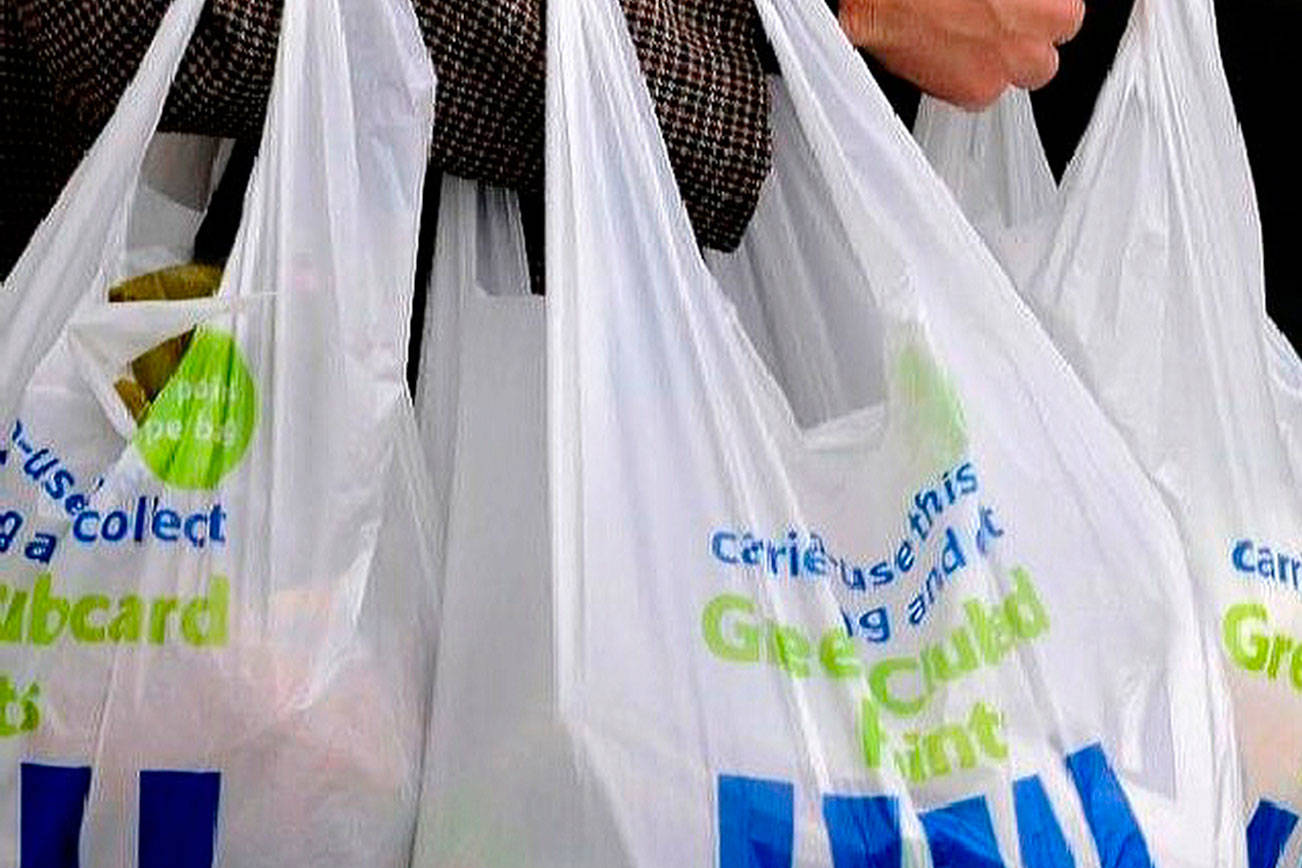Oakland Plastic Bag Study
The conventional wisdom is that a bag made of paper is the more earth-friendly option. Indeed, on that assumption, San Francisco banned plastic bags in grocery stores in 2007. Other California communities, including Oakland and San Jose, are also considering their own plastic bag prohibitions. Meanwhile, since January, grocery shoppers in Washington D.C. Have been charged a five-cent tax on all disposable bags – both plastic and paper. And Baltimore's City Council is considering a ban on plastic bags or a levy on all disposable bags. Even environmental laggard China banned the use of ultra-thin plastic bags in 2008, while consumers in Italy, Belgium, Switzerland, Germany, and Ireland all now pay a surcharge for using plastic.
THE ENVIRONMENTAL IMPACT of the 50 to 80 billion plastic shopping bags Americans use every year is indeed significant. For one thing, a plastic shopping bag can take as long as 1,000 years to decompose in a landfill. If Norse explorer Leif Eriksson had left a plastic bag behind when he became the first European to visit North America, the bag would just now have decomposed.And because plastic bags easily become airborne, they turn up as litter in much greater numbers than do paper bags.
(In China, the blizzard of plastic bags swirling through the streets is known as “white pollution.”) The British Antarctic Survey has found plastic bags floating north of the Arctic Circle, and as far south as the Falkland Islands. Plastic bags pollute lakes and rivers and contribute to what’s been dubbed, a gyre of trash in the North Pacific Ocean. Floating plastic bags aren’t just unsightly; they also kill. An unknown number of turtles and other sea animals die each year after ingesting discarded plastic bags, which they mistake for food. SO THAT MUST MEAN paper bags are always better for the environment than plastic ones – right?Not so fast, Green Avenger.Overall, the the widely held view that paper bags are far more environmentally friendly than plastic. Paper bags, after all, require considerably more energy and resources to produce than plastic ones. The manufacture of an uncomposted paper bag generates nearly 40 percent more greenhouse gas emissions than a plastic bag does.


What’s more, plastic grocery bags consume 71% less energy during production and require less than 6% of the water needed to make paper bags. And since paper bags weigh six to ten times more than plastic, they require more fuel to transport them to stores and take up more space in landfills.Then there’s deforestation: about 14 million trees are cut down every year to satisfy America’s consumption of paper shopping bags. That means that the manufacture of paper bags delivers a climate change double-whammy. Not only are large quantities of greenhouse gases produced, but the number of CO2-absorbing trees is also cut back. And while it’s true that plastic bags may take as long as a millennium to decompose, paper bags often don’t fare much better. Due to the lack of water, light, and oxygen in many modern landfills, paper doesn’t break down significantly faster than plastic does.The difference in environmental impact between the two materials is so narrow that some environmentalists answer the “Paper or plastic?” question with another question: “Where do you live?” People who live by the water, they say, should choose paper, since plastic threatens marine wildlife, while residents in the interior should opt for plastic, since it results in fewer greenhouse gases and can be reused more often than a paper bag. OF COURSE, THE MOST ENVIRONMENTALLY CORRECT response to the “Paper or plastic?” question is: “Neither, thank you, I have a reusable shopping bag.” But even reusable bags are not always what they seem.
Whole Foods Market currently sells a reusable shopping sack called that’s made from 80 percent post-consumer recycled plastic bottles. There’s even a special edition of the bag endorsed by musician and environmental activist Sheryl Crow, for shoppers who want to save the Earth until the sun comes up over Santa Monica Boulevard.
But A Better Bag, it turns out, could be a lot better. Whole Food’s reusable bags are and shipped thousand of miles by ship and truck to stores in the United States. A truly better bag would be, say, a Fair Trade reusable tote bag made by a producer-owned cooperative in Central America.
But you’d still have to factor in the environmental impact of transporting the bags all the way to the U.S. That might have you considering the merits of a locally-produced reusable bag made of organic hemp, or perhaps one fashioned from post-consumer recycled material, or but by then, of course, everyone in the grocery store line will be yelling at you.THE FACT IS, even if you lug your groceries out of the store in a certifiably earth-friendly reusable bag, you shouldn’t be so quick to congratulate yourself.“The grocery bag is not the real problem,” says Bob Lilienfeld, editor of the, “it’s all the stuff you put in the bag. The amount of environmental damage done by the bag is about one-tenth the damage done by the products inside.”Lilienfeld and others say that if you really want to do something good for the planet, reduce, reuse, and recycle – in that order. Reducing consumption isn’t a message that often gets heard in a country whose economic wellbeing depends on people buying more stuff. But ultimately, doing more with less may turn out to be the most sustainable answer to the incessant “Paper or plastic?” question.We want to hear what you think about this article.
Research On Paper Bags
To the editor or write to letters@theatlantic.com.